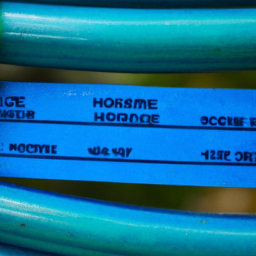Garden Hose GPM How Many
How Many Gpm Is A Garden Hose
What You Need To Know About Garden Hose Flow Rates
The amount of water that flows out through a garden hose is influenced by the length of the hose, the nozzle's diameter, and pressure. Measuring how many gallons per minute (GPM) it flows out of a garden hose is important for determining both cost and water efficiency.
How to Measure GPM in a Garden Hose
To accurately measure GPM, a special GPM measurement gauge is needed. First, hook the gauge's outlet up to the hose or water outlet. Turn the water valve on to open the hose. Make sure the nozzle is on the end of the hose is closed. Finally, read the GPM on the gauge. The reading should stay steady.
Calculating GPM Without a Gauge
If you don't have a gauge, you can use a five-gallon bucket to measure GPM. First, fill the bucket with water. Make sure to get as close to five gallons as possible. Then, set the bucket under a running hose. With the nozzle closed, time how long it takes to fill the bucket completely. The result is the GPM, which you can calculate using this formula:
GPM five gallons seconds it took to fill the bucket
For example, if it takes 60 seconds to fill the bucket, the GPM is 0.083.
Typical GPM for Garden Hoses
Most standard garden hoses flow at a rate of between 0.5 and 5 GPM, depending on the individual hose. The ratio is usually between 5 gallons per 10 feet and 1 gallon per 10 feet. A 3-foot hose will disperse between 0.5 and 1 GPM, while a 50-foot hose will disperse between 2.5 and 5 GPM.
Importance of Measuring GPM
Measuring GPM helps gardeners better understand how much water is going through the hose. This helps them determine how much the water bill will be and how long it will take to water their gardens. It also helps gardeners figure out which type of nozzle or hose works best for the job. For example, if a garden requires a lot of water, a longer hose with a higher GPM is usually the best bet.
Applications of GPM Measurement
GPM measurements can also be used for other outdoor activities, such as washing cars or filling pools. Knowing the GPM can help save water and money. GPM measurements are especially useful for water-sensitive areas where water use needs to be regulated. This helps ensure water is used efficiently and doesn't pose a threat to the local environment.
Potential Challenges
One challenge of measuring GPM is that most garden hoses don't come equipped with a gauge. This makes it difficult to accurately measure GPM without using a specialized gauge. Another challenge is that GPM can vary based on the length of the hose and the pressure of the water.
Final Word
GPM is an important measurement to understand for any gardener. GPM measurements help gardeners understand how much water their hose is actually pushing out as well as how much it will cost them and how much time it will take to water their garden. Knowing the GPM also helps with other outdoor activities, like car washing, and helps conserve water in water-sensitive areas.
Takeaways
- A GPM measurement gauge is needed to accurately measure GPM.
- Most standard garden hoses flow at a rate of between 0.5 and 5 GPM, depending on the individual hose.
- GPM measurements help gardeners understand how much water their hose is pushing out, how much it will cost, and how much time it will take to water their garden.
- Knowing the GPM helps with other outdoor activities, like car washing, and helps conserve water in water-sensitive areas.
- The most common challenge of measuring GPM is that most garden hoses don't come equipped with a gauge.

Previous Page
Next Page
